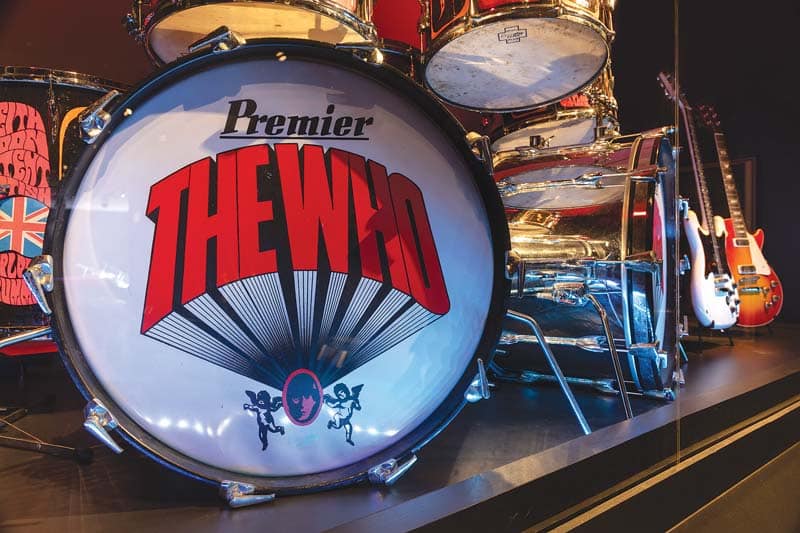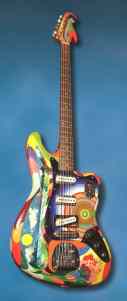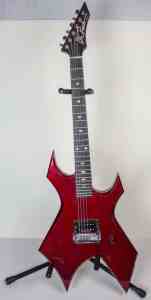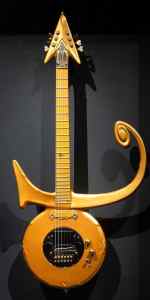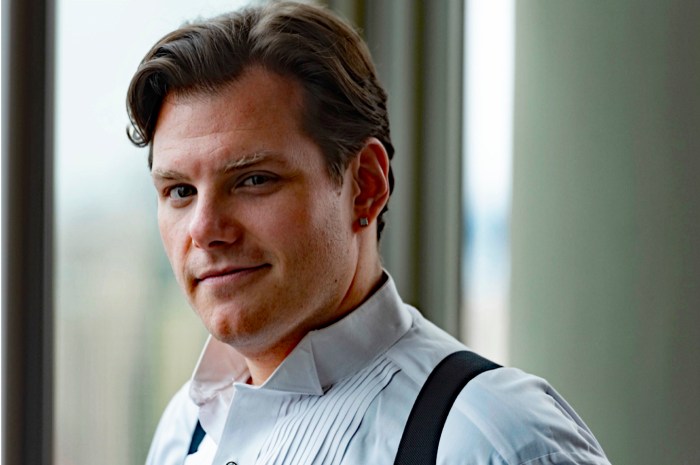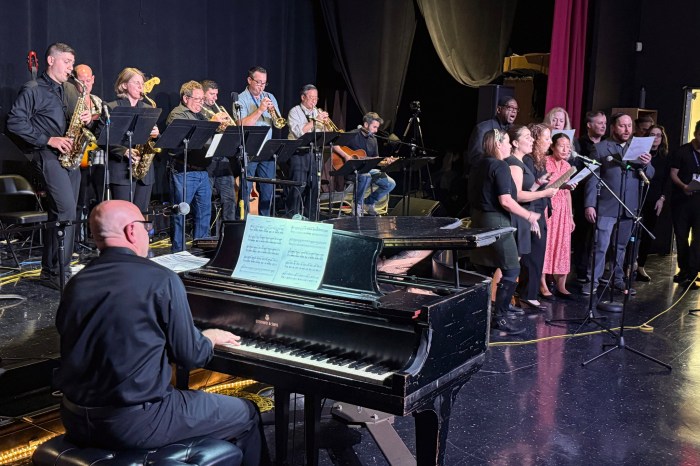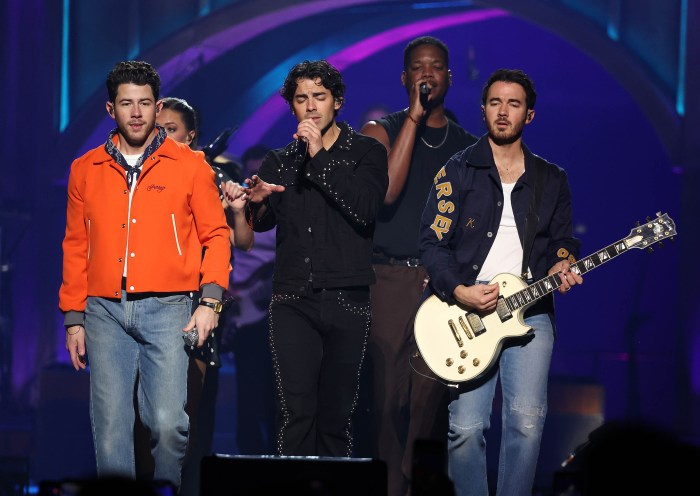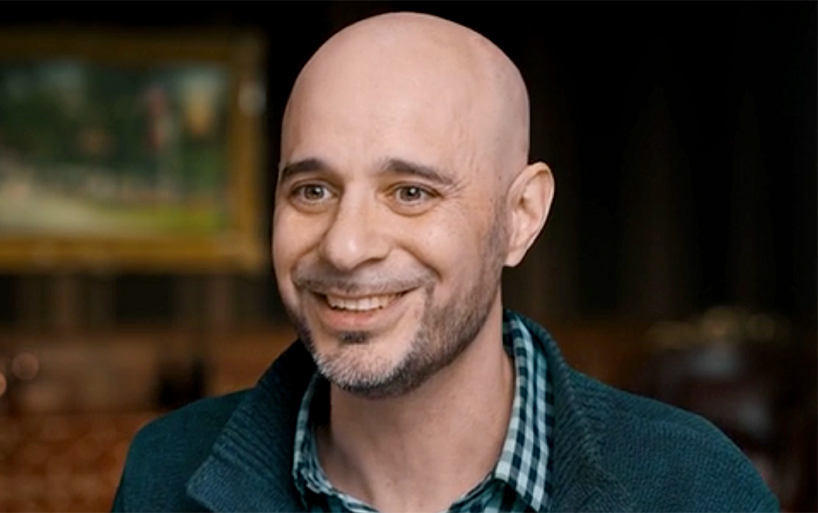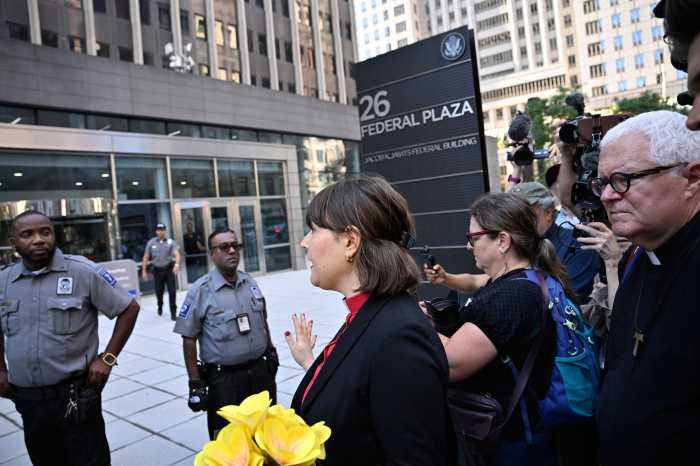
When Chuck Berry sang about rolling over Beethoven and telling Tchaikovsky the news, little did he know that rock and roll would one day find its primary tool, the electric guitar, featured in the hallowed hall of high culture that is the Metropolitan Museum of Art. But so it goes with the opening of Play It Loud: Instruments of Rock & Roll, an exhibit that opened at the Met on April 8 and is on display through Oct. 1. Co-curated by Jayson Dobney, curator of the Met’s musical instrument collection and Rock and Roll Hall of Fame curator along with Acquisitions Director Craig Inciardi, this 7,500-square foot exhibit features 135 displayed instruments on loan from various collectors and museums. Among the gems featured are Jimmy Page’s double-neck Gibson on which he wrote “Stairway to Heaven” on, Prince’s Love Symbol guitar, Lady Gaga’s custom-designed piano and Eddie Van Halen’s reconstructed performance rig as it appeared onstage in 1978. Play It Loud was roughly five years in the making. Inciardi, who previously curated Rock Fashion, the prior 1999 Met-Rock Hall collaboration, admits the biggest challenge was getting musicians to agree to loan their instruments out for this ambitious project.
“The designer of the show, Dan Crenshaw, was just a genius and was enthusiastic from the start. Any time there was a challenge, he solved it and made it very exciting,” he explained. “So there are a number of instruments in the exhibit—quite a lot—that the musicians were using on tour or in the studio weeks, months, and in some cases, days before they were installed into the exhibit. For working musicians, these are their tools and their prized possessions.”
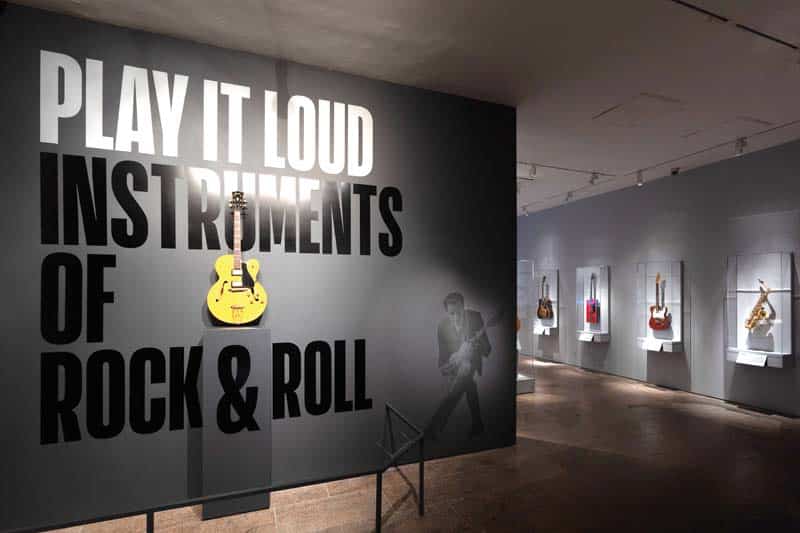
One of the earliest supporters was Page. At a prior press conference, he recounted hearing Inciardi and Dobney’s pitch when they came to visit him in England.
“It was explained to me that you walk through the Greco-Roman statues, you would see Chuck Berry’s guitar standing there and they said, ‘that’s all you’re going to see when you approach it.’ So I said, ‘What do you want? What can I do? What can we give you to help this along?,’” he recalled. “It was just so magical, like a chalice, like the Holy Grail. I was really keen to be able to loan whatever I could to make it come along. And I’m sure everyone who was approached felt the same way. To have something of the phenomenon of electric guitar music and what that meant. What that meant for us in England, when the rockabilly of Elvis Presley reached us and the records of Ricky Nelson and the rock and roll trio of Johnny Burnette—these sort of things changed my life when I heard them.”
Among the sections museum-goers will view are Creating An Image, which reflects how emblematic of an artist an instrument can be, and Creating a Sound, which features video interviews with Page, Rage Against the Machine’s Tom Morello, Keith Richards and Van Halen about their craft. These will be accompanied by displays of their in-concert rigs. It’s all part of what Dobney was aiming to achieve with Inciardi.
(Sepultura) Family collection (Photo courtesy of the Rock & Roll Hall of Fame)
“We really wanted to tackle the subject of musical instruments and the many different ways that rock and roll musicians use them,” he said. “The muse of the creation of music. The tools for the performing of music and as an art museum, it was really important that we represent the visual uses of many decorated pieces, as well as iconic images.”
Guitarist Steve Miller has been a supporter of the Met’s earlier efforts, including 2014’s Early American Guitars: The Instruments of C.F. Martin. At that event, he pointed out the validation an exhibit like this gives to rock and roll.
“When I first walked into this exhibit, I was stunned by the power, elegance and intelligence of this assembled collection of musicians and it’s really why we all love the Metropolitan Museum so much. This is an exhibit that only the Met could bring together,” Miller said. “Jayson reflected what all us rock musicians agree has been years of nonsense that has defined and trivialized the importance of these instruments and the music produced on them. The knowledge and experience that Jayson brought, and the power and wisdom of the Met have made it, in a very simple and elegant way, very clear what the magical gift of the electric guitar actually is. It’s a very moving thing.”

Joel Peresman, president and CEO of the Rock and Roll Hall of Fame Foundation, was equally adamant about the importance of Play It Loud.
“Rock and roll is truly the art form of our generation. How you celebrate that is one of the reasons why the museum in Cleveland was started to begin with,” he said. “To be able to have the legitimacy of it being in a place like the Met—not everyone coming here is 90 years old looking for a Rembrandt. People are looking for something interesting and different, but can also find Rembrandts and the other stuff. It’s just perfect time and place for it.”
Play It Loud: Instruments of Rock & Roll will be on display through Oct. 1 at the Metropolitan Museum of Art, 1000 Fifth Ave., NYC. For more information, visit www.metmuseum.org or call 800-662-3397.




